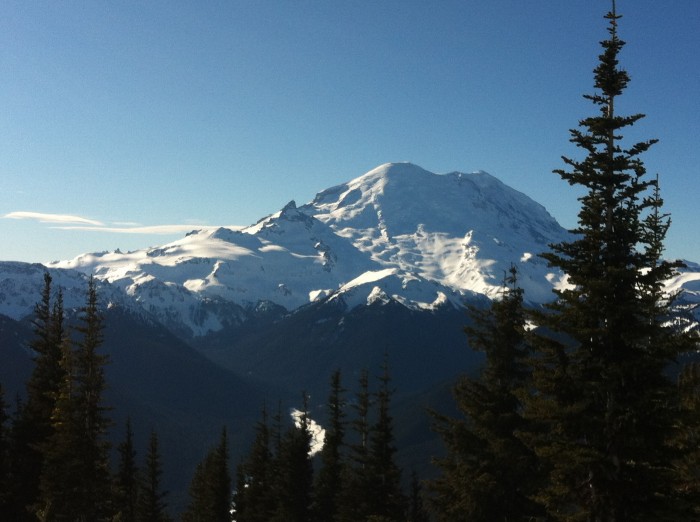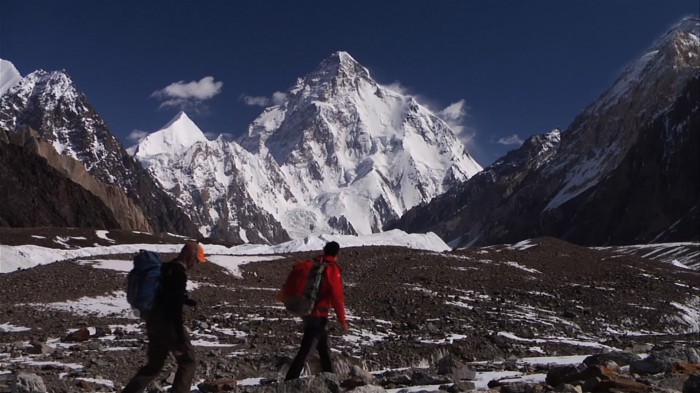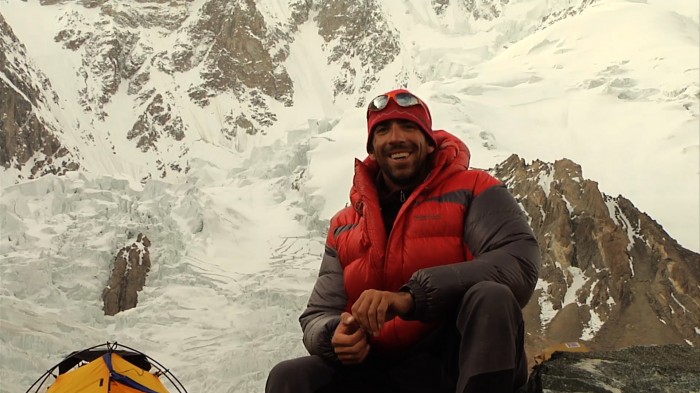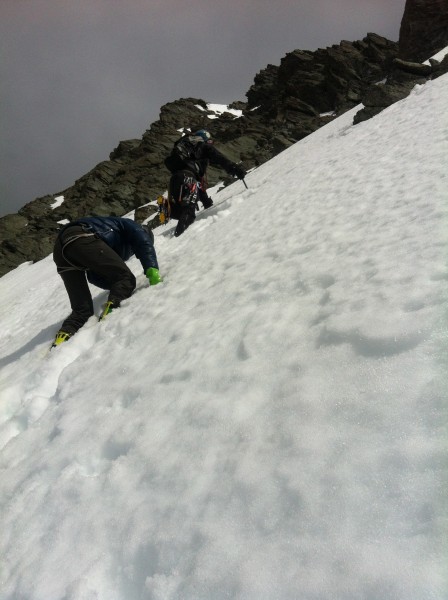
On May 1st, 1963 Seattleite Jim Whittaker became the first American to reach the summit of Mount Everest. Half a century later, high altitude mountaineering continues to capture the imagination of the Pacific Northwest.
A clear day in Seattle reminds us of our geographic wealth: the Cascades to the east; Olympics to the West, and to the South, Mount Rainier watches over all of us dreamers.
We Northwest climbers represent a deep rooted, yet often misunderstood community willing to risk life, limb, and livelihood–all for a chance to commune with Mother Nature at her nastiest.
Chasing the brutal lessons taught by tall mountains has led Northwest mountaineers across the globe.

Craig Miller is a guide for the Seattle-based Mountaineers who leads treks and climbs around the world. He has led 15 trips to the Himalayas, home of the ten highest peaks on the planet. He says mountaineers always feel the urge to climb higher.
“I have not summited Everest but suppose you did, and then you say ‘well what’s the next big thing?’ Well, K2,” said Miller.
And herein lies the insanity that is high altitude mountaineering. For every four people that have stood on the Summit of K2, one person has died.
The film K2: Siren of the Himalayas, is currently making its rounds at screenings across the country after debuting at the Banff Mountain Film Festival in 2012.

The documentary focuses on two expeditions, both to the Karakoram Range but 100 years apart–one in 1909 and the other in 2009. The film attempts to explain what it is that drives people out of comfortable homes and into dangerous mountains.
“Climbing mountains doesn’t make any sense. It doesn’t accomplish anything; it doesn’t make the world a better place. It’s often regarded as selfish,” said Dave Ohlson, director of the film. “You [die in the mountains and] leave a terrible amount of heartache for your loved ones, for what?”
This question reverberates throughout the film. And climbing can be risky long before crampon touches snow: to climb K2, you have to start in Pakistan.
“We were eating in restaurants that had been firebombed just because they catered to westerners,” recalls Ohslon of a climbing trip to Pakistan. In 2013 a group of international climbers (including one local guide) was killed by militants in a hotel that serves as a base camp for another Himalayan peak, Nanga Parbat.
Then comes the climbing. Just a simple matter of mitigating avalanches, traversing crevasses and holding yourself to rock and ice by any means while gravity does everything it can to rip your inconsequential body off into space.
All for a chance at reaching the “death zone,” a height only found in the Himalayas. At 26,000 feet human bodies cannot acclimatize and will waste away and die without supplemental oxygen. Climbers flock to these elevations.
For what?
I grappled with this question, at 9,000 instead of 26,000 feet, last summer on the summit pyramid of Mount Shuksan in the North Cascades. My climbing partners and I suddenly found ourselves in a whiteout.
Reaching the summit would mean scaling up a gully raining rocks and chunks of ice. After being hit in the head with a piece of this icefall one of our team tied himself in to a rock anchor and announced he would climb no higher.

The other two of us should have given up on the summit but the insanity of 20-year-old climbers meant that we were already kicking steps before our companion was fully anchored.
And that is when insanity turns into clarity.
Survival instincts kick in, offering complete mental and physical synchronization. Focus like this I have only known in the mountains. It is the reason I believe we are drawn to them.
“When you are out there, every choice is consequential and there is something empowering about that,” Ohlson said.
“[Mountaineering] is much more intense than this humdrum life that we live in society at large.” Ohlson continued, “It is also not something unique to our time period. In the 1909 expedition they were saying and thinking the exact same things.”
Throughout the film, the 2009 journey to K2 is paralleled step by step through photographs and voiceovers of journal entries from the 1909 team. It is eerie to see how closely the observations made one hundred years apart match up.
During one flashback the 1909 expedition leader states, “Walking is really the only kind of locomotion that puts us on equal terms with the world about us. Modern mechanics make us lose sight of our relative importance.”
In a subsequent scene, Fabrizio Zangrilli, the lead guide in 2009, explains his sport as a kind of “walking meditation,” referring to lessons of humility, which have come to him from the simplicity of small steps in grand places.

He shared one of his life-changing realizations: “I realized love is the most important thing in life. If you don’t find someone to love you are missing out on a huge portion of life.” A funny thought to occur in the frigid, windswept loneliness of the Patagonian alpine.

Though living the nomadic life of the climber for the last 20 years, Zangrilli is now settled in Basalt, CO and plans to get married in March.
Speaking to Fabrizio it becomes apparent that it’s not just about risk and adventrue.
“You get a bit older and you realize there is a balance to it…The summit is just a turning around point.”
Such wisdom from someone at the pinnacle of the sport momentarily sours my proud memory on the top of Mt. Shuksan, until Zan
grilli adds:
“I look back at those trips in my twenties when you are just figuring it out with a massive smile on my face. We wanted it so bad.”
See K2: Siren of the Himalayas
K2:Siren of the Himalaya will be screening at the Mountaineers clubhouse in Magnuson park on Thursday the 20th at 7pm. Get tickets »

